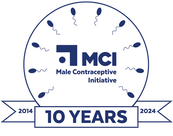Vasectomy Consultation
Vasectomy: What you need to know about the vasectomy procedure.
Permanent, but not immediately
Vasectomy is a safe, simple surgical procedure that is intended to provide life-long, permanent, and very effective protection against pregnancy. However, it is important to note that people who get vasectomies are not immediately infertile. For many men, sperm is still present for a few months afterward and men are advised to ejaculate at least 20 times (or more!) before their semen is free of sperm.
People who get a vasectomy will have their semen analyzed by their doctor for 6-12 weeks after the procedure to measure the amount of sperm present. Therefore, people who have gotten a vasectomy are advised to use another form of contraception until vas occlusion is confirmed by post-vasectomy semen analysis (PVSA).
Additionally it is critical that people know that vasectomy is not 100% reliable even after vas occlusion is confirmed. The risk of pregnancy after vasectomy is approximately 1 in 2,000 for men who have post-vasectomy azoospermia (i.e., no measurable sperm in a man's semen) or PVSA showing rare non-motile sperm (RNMS).
Lastly, repeat PVSA is necessary in less than or equal to 1% of vasectomies when a technique known to have low occlusive failure rates has been used.
Vasectomy is a safe, simple surgical procedure that is intended to provide life-long, permanent, and very effective protection against pregnancy. However, it is important to note that people who get vasectomies are not immediately infertile. For many men, sperm is still present for a few months afterward and men are advised to ejaculate at least 20 times (or more!) before their semen is free of sperm.
People who get a vasectomy will have their semen analyzed by their doctor for 6-12 weeks after the procedure to measure the amount of sperm present. Therefore, people who have gotten a vasectomy are advised to use another form of contraception until vas occlusion is confirmed by post-vasectomy semen analysis (PVSA).
Additionally it is critical that people know that vasectomy is not 100% reliable even after vas occlusion is confirmed. The risk of pregnancy after vasectomy is approximately 1 in 2,000 for men who have post-vasectomy azoospermia (i.e., no measurable sperm in a man's semen) or PVSA showing rare non-motile sperm (RNMS).
Lastly, repeat PVSA is necessary in less than or equal to 1% of vasectomies when a technique known to have low occlusive failure rates has been used.
Post-vasectomy Fertility Options
Adoption, vasectomy reversal, and sperm retrieval with in vitro fertilization are all options for people who have gotten a vasectomy but still find themselves interested in having children. However, these methods are not always successful and may be expensive. In the case of vasectomy reversal, even if it is successful, it does not guarantee a person’s fertility will return.
Adoption, vasectomy reversal, and sperm retrieval with in vitro fertilization are all options for people who have gotten a vasectomy but still find themselves interested in having children. However, these methods are not always successful and may be expensive. In the case of vasectomy reversal, even if it is successful, it does not guarantee a person’s fertility will return.
Surgical Complications
These complications can include, but are not limited to, a symptomatic hematoma (pain, swelling, redness, and disfiguring bruises are common symptoms) and infection. This occurs in around 1-2% of vasectomy procedures, with figures varying with surgeon experience. Additionally, chronic scrotal pain associated with a negative impact on quality of life occurs after vasectomy in about 1-2% of men, and a few of these men may require additional surgery.
These complications can include, but are not limited to, a symptomatic hematoma (pain, swelling, redness, and disfiguring bruises are common symptoms) and infection. This occurs in around 1-2% of vasectomy procedures, with figures varying with surgeon experience. Additionally, chronic scrotal pain associated with a negative impact on quality of life occurs after vasectomy in about 1-2% of men, and a few of these men may require additional surgery.
Pre- and Post-procedure instructions
- No blood thinners within 10 days prior to the procedure.
- Shave hair from scrotum day prior to procedure. (Note: patients should be instructed on safe hair removal techniques including avoiding the use of electric clippers on scrotum).
- Patient to shower prior to procedure: night before and morning of procedure.
- Patient to bring jockstrap to wear immediately following procedure and to use for at least 2 weeks after procedure.
- Pain control following procedure expected to be without narcotics including a suggested regimen of Tylenol 1000 mg POQ 8-hours staggered with Advil 600-800 mg POQ 8-hours with food and water scheduled for 48-72 hours after procedure and then as needed. (Please note that this is illustrative and anyone getting a vasectomy should follow the pain management regimen advised by their doctor or another medical professional).
- No ejaculation for at least one week after vasectomy.
Are you interested in submitting your information for a vasectomy consultation?
Now that you have completed reviewing the vasectomy consultation information, you are eligible to submit your information and proceed with a consultation with a medical professional. You will be able to send a secure message to “Urology Male Contraception Initiative” and will be directed to complete a consultation form to initiate an e-visit. You will be contacted either for scheduling of vasectomy or invited for further evaluation and counseling as deemed appropriate by their Urology provider.

